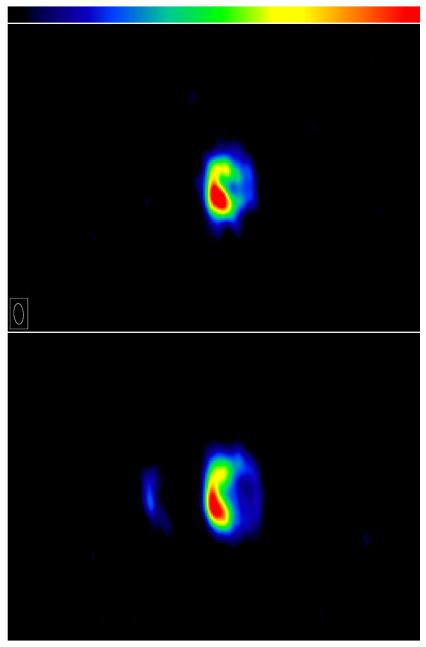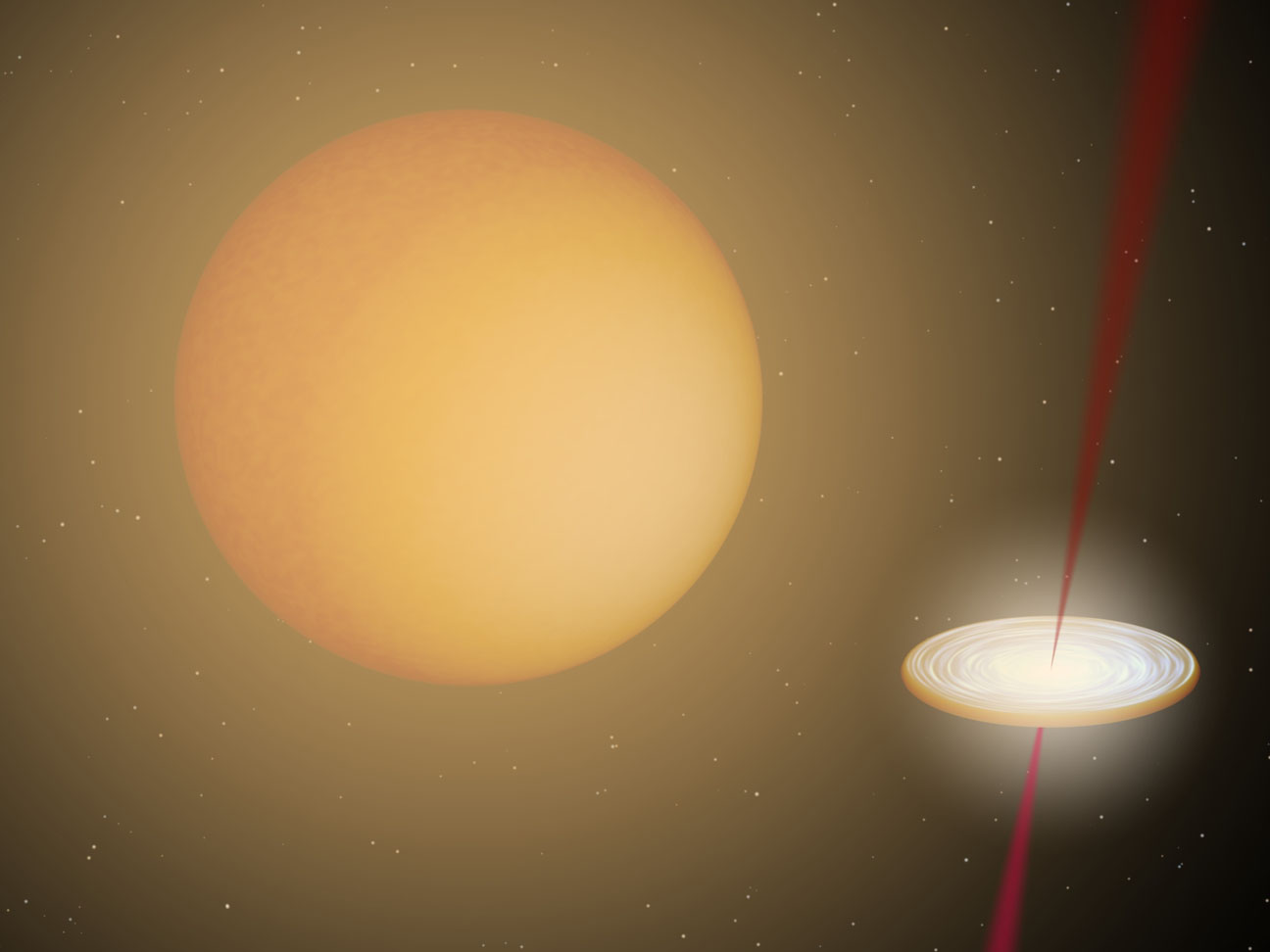Image List
-

On February 12, the recurrent nova RS Ophiuchi underwent a powerful eruption that caused it to brighten briefly to naked-eye visibility. These radio images show RS Ophiuchi at 21 (top) and 27 (bottom) days after the outburst, as observed with the Very Long Baseline Array at a wavelength of 18 centimeters. The expanding shell shows radii roughly 27 and 30 times the Earth-Sun distance in these images, matching that expected from X-ray observations of the same object, assuming a distance of about 5200 light-years. The "jet" to the east (left), clearly present on day 27, is not seen on day 21. Such jets have been seen in white dwarf systems in the past, but never so clearly and so early. In particular, these images give the most precise measurement yet of how soon a jet appears after an outburst.
Observations showed that the white dwarf source of the outburst is nearly as massive as it can be, weighing about 1.4 times as much as the Sun. In a few hundred thousand years, the white dwarf may accumulate enough mass to explode as a Type Ia supernova. Such supernovae allow astronomers to measure the size and expansion of the universe.
NRAO/CfA -

This artist's conception illustrates a star system like RS Ophiuchi, known as a symbiotic star system. The white dwarf orbits within the extended gaseous envelope of the red giant companion and gathers surrounding material into an accretion disk. When the white dwarf goes nova, it ejects two jets of material in opposite directions.
Rob Hynes, LSU